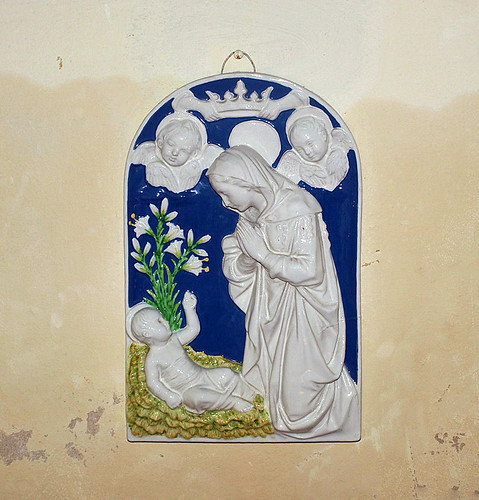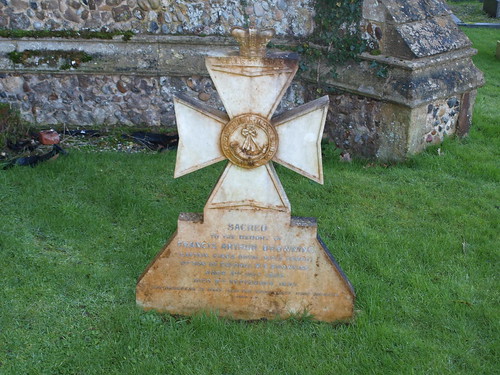ST MICHAEL. Much rebuilt, especially the chancel and upper parts of the tower. The most reliable-looking windows are Dec. Dec also the angle PISCINA in the S wall of the nave. It is of the type of that in the chapel of Little Wenham Hall. - FONT. From St Mary-at-Quay Ipswich. Octagonal. Four lions against the stem, and angels with shields and the Signs of the Evangelists against the bowl. - PAINTING. Christ and the Children, painted by John Constable in 1804. Tall, narrow format, the figures in the tradition of late C18 English portraiture. - STAINED GLASS. Parts of C15 figures in a chancel S window. - PLATE. Almsdish 1701.
BRANTHAM. It is near the estuary of the Stour, an old village with a row of old cottages and a 14th century church, and an industrial village which has grown up beside it.
A charming lychgate with shingled roof and roses on its beams leads to the little church, which has fragments of old glass showing a bishop with his staff and a saint with an arrow, and a pulpit with the tree from which the Crown of Thorns was made carved on the panels. But the greatest treasure here, one of which any church would be proud, is a painting showing Christ blessing little children. It was painted by the immortal Constable before he was immortal, and given to this church as an altarpiece in 1804. It is a priceless possession and especially interesting as one of the rare examples of the painter’s excursions into the realm of figure painting.
In the neighbouring hamlet of Cattawade lived for a time that quaint 16th century character Thomas Tusser, and it was here that he wrote his Hundreth Good Pointes of Husbandrie. This book, which was soon to be wedded to as many points of Good Huswifery, was exceedingly popular and a bestseller in spite of Fuller’s spiteful allusion to the author that “none was better at the theory or worse at the practice of husbandrie.” We come upon the story of this “good, honest, homely, useful old rhymer,” as Southey called him, in Essex, where he was born.



No comments:
Post a Comment